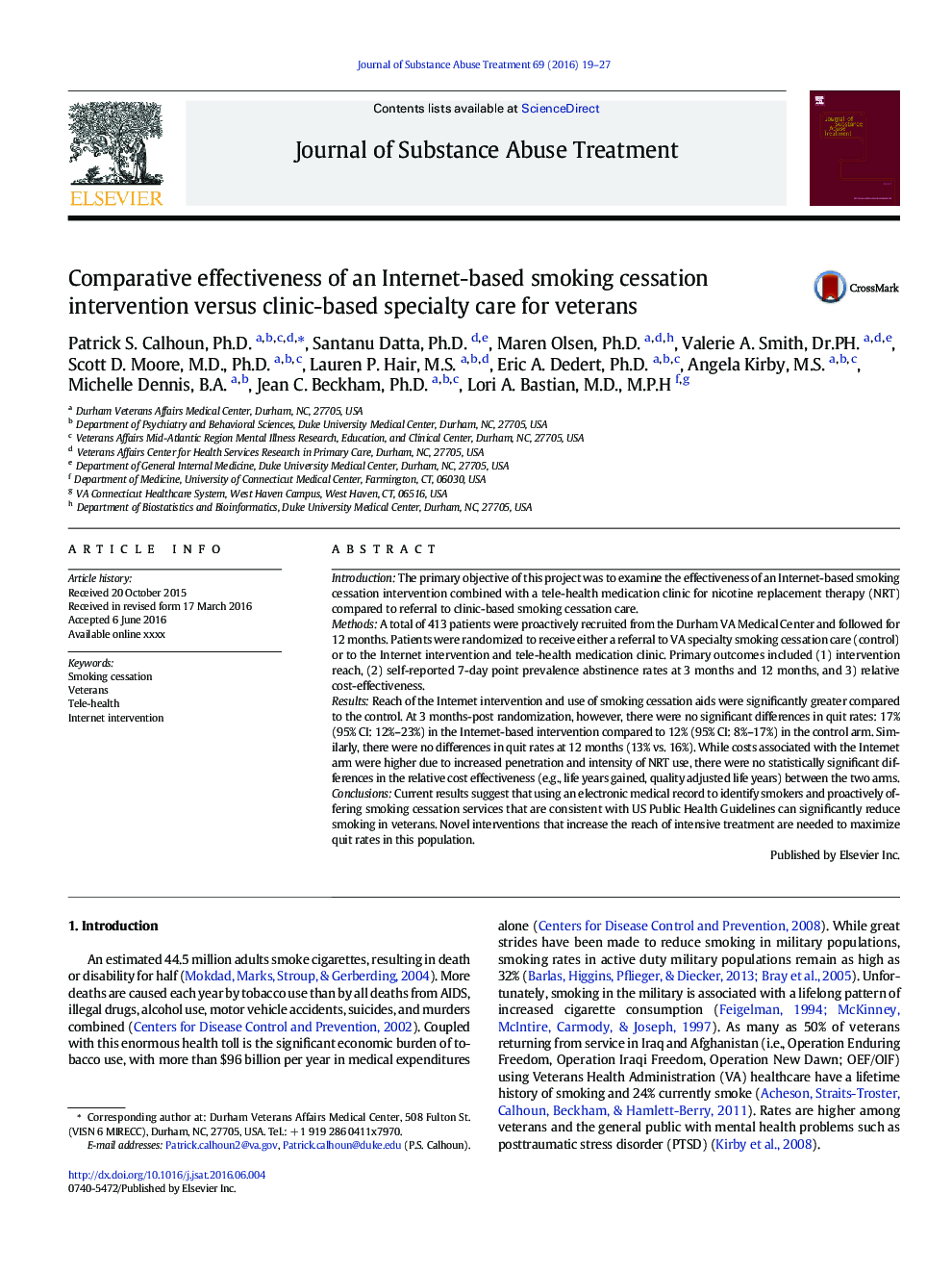| Article ID | Journal | Published Year | Pages | File Type |
|---|---|---|---|---|
| 329556 | Journal of Substance Abuse Treatment | 2016 | 9 Pages |
•The Internet intervention arm was associated with increased reach over usual care.•There were no significant differences between arms in quit rates at 3 or 12 months.•Both interventions were cost effective.•Costs were higher for the Internet arm due to increased penetration of NRT.
IntroductionThe primary objective of this project was to examine the effectiveness of an Internet-based smoking cessation intervention combined with a tele-health medication clinic for nicotine replacement therapy (NRT) compared to referral to clinic-based smoking cessation care.MethodsA total of 413 patients were proactively recruited from the Durham VA Medical Center and followed for 12 months. Patients were randomized to receive either a referral to VA specialty smoking cessation care (control) or to the Internet intervention and tele-health medication clinic. Primary outcomes included (1) intervention reach, (2) self-reported 7-day point prevalence abstinence rates at 3 months and 12 months, and 3) relative cost-effectiveness.ResultsReach of the Internet intervention and use of smoking cessation aids were significantly greater compared to the control. At 3 months-post randomization, however, there were no significant differences in quit rates: 17% (95% CI: 12%–23%) in the Internet-based intervention compared to 12% (95% CI: 8%–17%) in the control arm. Similarly, there were no differences in quit rates at 12 months (13% vs. 16%). While costs associated with the Internet arm were higher due to increased penetration and intensity of NRT use, there were no statistically significant differences in the relative cost effectiveness (e.g., life years gained, quality adjusted life years) between the two arms.ConclusionsCurrent results suggest that using an electronic medical record to identify smokers and proactively offering smoking cessation services that are consistent with US Public Health Guidelines can significantly reduce smoking in veterans. Novel interventions that increase the reach of intensive treatment are needed to maximize quit rates in this population.
